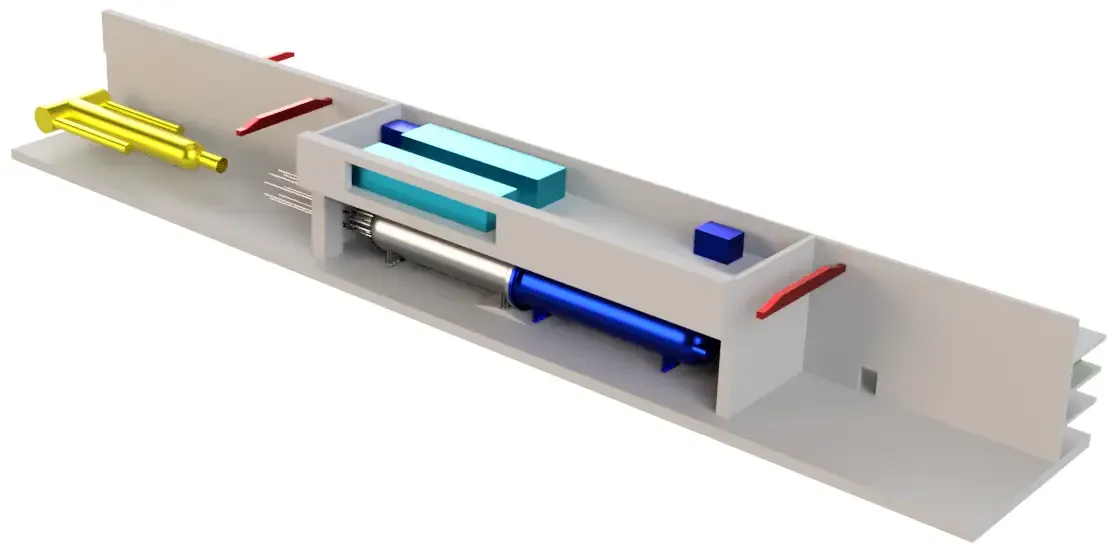This is MIGHTR.
Conceptualization philosophy
MIGHTR was born from the idea that constructability needs an equal place among other objectives in early reactor conceptualization. Advanced reactors and small modular reactors, because of their lost economy of scale, need paradigm shifting innovation – ideas that shift the cost curve, not just optimize down the curve. High temperature gas reactors have great advantages with high temperature output and passive safety, but these come at the cost of low power density which drives up the cost relative to traditional reactors. Civil structures dictate the pace and cost of nuclear construction, so design for constructability is a winning approach, but it typically enters the design process too late, after much of the design architecture is fixed. By this time, you are working down the value engineering curve, not shifting it to unlock real cost reductions.
Enrique's experience in advanced reactor development equipped him to make the logical extrapolation that limiting the height and span of the reactor building is critical to achieving substantial project delivery cost reductions. This aligned well with an observation from the United Engineers and Constructors on nuclear construction in the 1980s that, "the most significant factor dictating construction sequence is gravity." Short span and short height buildings can be constructed faster and with simpler equipment.
Starting from the traditional HTGR, we integrated the largest components and rotated them from a vertical orientation to a horizontal one, forming the MIGHTR. This reduced the building height from 60 meters to 12 meters and span from 30 meters to 14 meters. Then, we set out on a DOE funded 3 year, $4.9M effort to evaluate the safety systems, maintenance equipment, core physics, and thermal fluids of our new architecture. We continue to incubate MIGHTR in collaboration with universities and national labs.

These are some of the systems and components in one embodiment of the reactor building. You can read more about our develop by embodiment approach here.
Publications
Design Philosophy
- MIGHTR concept presentation paper Mechanical features and construction cost at ICAPP 2024 ARC-20 project summary papers at ICAPP 2024 Design by embodiments at ICAPP 2024 Designing-to-build a HTGR NPP: horizontal and compact
Neutronics & shielding
- Cross section generation in NET 2024 Two batch refueling scheme at ANS Winter 2023 Neutronic analysis, MIT thesis 2023 Low enriched uranium analysis, MIT thesis 2023
Civil and mechanical structures & components
- Seismic load analysis at SMiRT-27 Seismic engineering at ICAPP 2024 Fuel block dynamic response at ICAPP 2024 Graphite mechanical analysis, MIT thesis 2023 Reactor core component structural analysis, MIT thesis 2022 Final report: Structural mechanics and component sizing RCCS mechanical conceptualization
Thermal hydraulics
- Thermal stratification in ICONE 2021 Preliminary design of reactor cavity cooling system Preliminary primary system thermal fluids analysis ANL semi-annual report 1 ANL semi-annual report 2 ANL semi-annual report 3 ANL semi-annual report 4 Primary system thermal fluids analyses RCCS thermal hydraulics